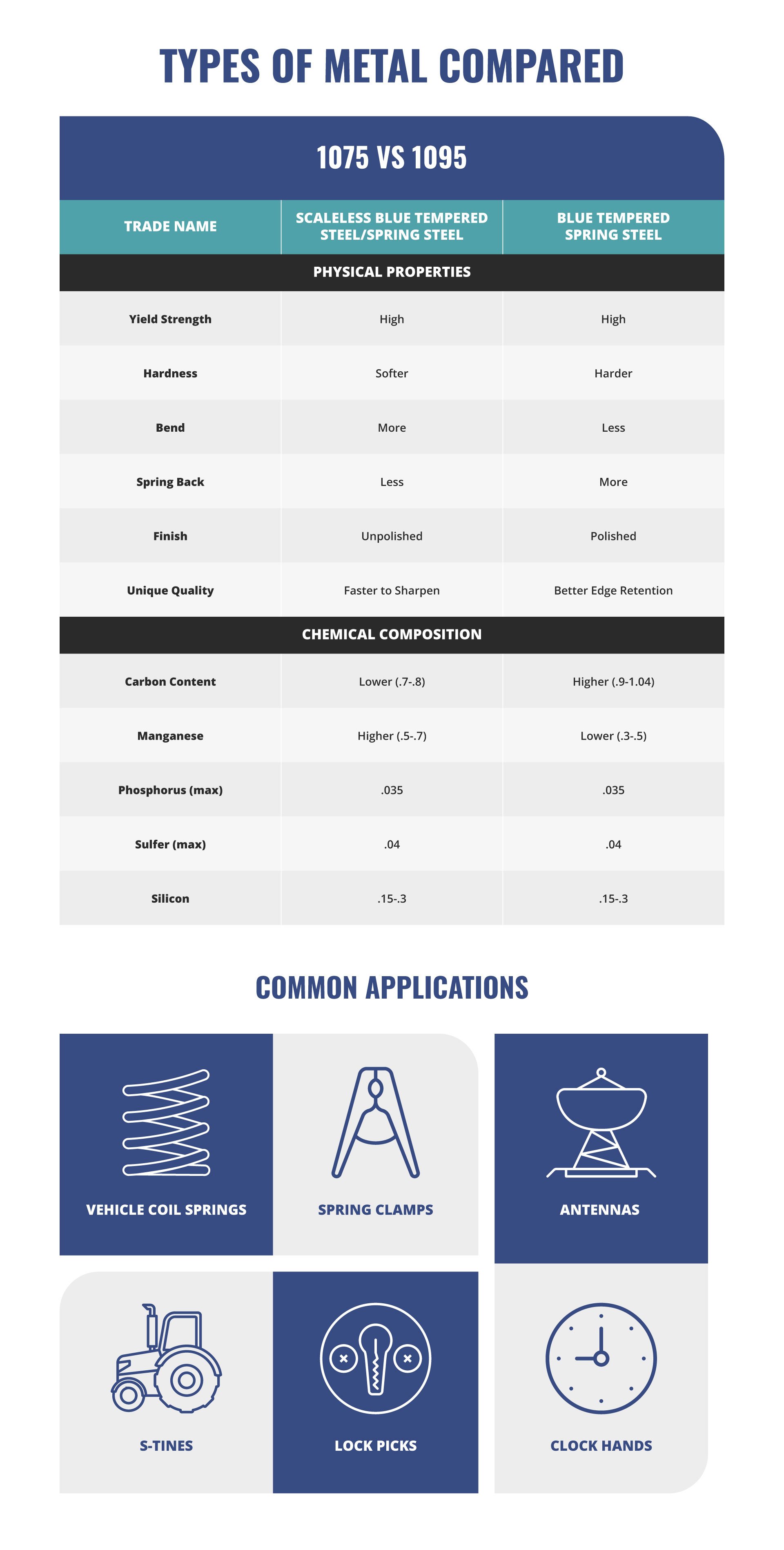
on December 2, 2022 | 2 min. read

![Metal Compared - Tempered Spring Steel 1075 Vs 1095 [INFOGRAPHIC]](https://www.meadmetals.com/hs-fs/hubfs/Blog_Images/1075-vs-1095-blue-tempered-spring-steel.png?width=720&height=531&name=1075-vs-1095-blue-tempered-spring-steel.png)
At the end of the day, you want to source materials that suit your project's purpose. Sometimes the focus is on performance and endurance. In other applications, the final product's appearance may be more important than functionality.
Whatever your needs may be, know that Mead Metals will listen to the specifications of your project and help you secure the suitable material for your application.
Below, I've outlined the fundamental differences between two types of Tempered Spring Steel: 1075 and 1095. This side-by-side comparison will help you understand how closely related materials differ.

While the materials also differ in manganese content, carbon content is the primary differentiator. Known as high-carbon steel, blue-tempered spring steel is harder, less bendable, and has a higher degree of spring back. Finished products created with this material have better edge retention, which correlates to the material's other properties.
Alternatively, Scaleless Blue Tempered Steel has a medium carbon content, resulting in a softer, more easily bent material with less spring back (compared to 1095). Because it has greater machinability, it is easier to sharpen and manufacture.
Both metals are used to create many of the same products. The decision of which type depends upon your manufacturing process and the unique properties you would like the final product to have. Both 1075 and 1095 spring steel are used to make:
If you're unsure whether Scaleless Blue Tempered Steel (1075) or Blue Tempered Spring Steel (1095) is right for your project, we can help you determine which metal's properties are better suited to your application. And from there, our trust team will provide the material you need in the appropriate gauge.
